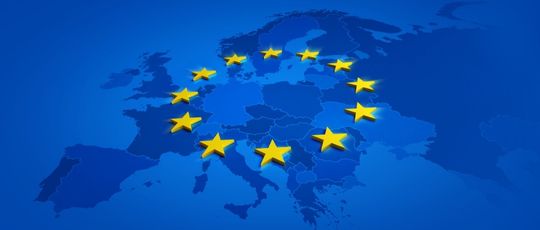For WorldatWork Members
- Internal Talent Marketplaces Get a Boost from AI, Workspan Magazine article
- TR Is Key to Successfully Integrating AI and Work, Journal of Total Rewards article
- AI Copilots: Improving the HR Experience for Employees, Journal of Total Rewards article
- Mini-study: Emerging Insights on AI in Total Rewards, research
For Everyone
- How Will AI Impact TR’s Roles and Strategies Over the Next 5 Years? Workspan Daily article
- Elevate Engagement and Workforce Planning Through AI, Workspan Daily article
- Incorporate AI to Personalize Financial Well-Being Benefits, Workspan Daily article
- How Artificial Intelligence Risks Directly Apply to Total Rewards, Workspan Daily article
- AI Could Be the Answer to Reduce Employees’ Benefits Confusion, Workspan Daily article
As artificial intelligence (AI) becomes more integral in the workplace, an organizational need has arisen for HR and total rewards leaders to work closely together with their counterparts in information technology (IT).
In fact, Deloitte’s 2025 Global Human Capital Trends report found 30% of surveyed executives said they believe that to create better human and business outcomes, HR functions — including total rewards (TR) — need to be better partners with IT.
Another 11% of surveyed executives said it was prudent to install a leader to oversee human and machine resources, and that such an arrangement may offer an enhanced employee value proposition and increase retention.
Access a bonus Workspan Daily Plus+ article on this subject:
Long gone are the days when HR was known as “the people group” and IT was “the tech group,” and they largely stayed in their own lanes, said Marta Turba, WorldatWork’s vice president of content strategy.
“Today, technology is the backbone of the employee experience — influencing everything from productivity to performance to engagement,” she said. “Aligning around these mutual outcomes gives cross-functional teams a clear North Star, especially if it’s their first-time working shoulder-to-shoulder.”
Long gone are the days when HR was known as “the people group” and IT was “the tech group,” and they largely stayed in their own lanes.
Collaboration Benefits
When HR/TR leaders join forces with IT, it’s more than just a collaboration, said Turba. Instead, she called it a “strategic power move” that could help drive digital transformation for the organization.
“With IT’s muscle, HR/TR can automate the boring stuff, personalize the meaningful stuff and scale faster than ever,” Turba said, noting results are “faster, smarter, better” with tasks such as onboarding, training and recruiting.
Additionally, the partnership also can harness the full potential of data, Turba said, such as:
- Spotting retention risks before they become exit interviews.
- Identifying high performers before competitors poach them.
- Tailoring rewards before employees even think about leaving.
“The collaboration between IT and HR/TR is not just about combining resources — it’s about creating a more integrated, efficient and forward-thinking organization,” she said.
What to Consider
Since today’s workforce expects TR to reflect a modern value exchange, transparency is important, said Jess Von Bonk, a global HR transformation and technology advisory leader at Mercer.
“Real-time insights and agile platforms are also essential for personalizing the employee journey,” she said, adding that HR/TR can work together with IT to identify key moments and deliver intuitive, empathetic experiences.
Additionally, clear protocols for implementing technology and AI also must be established, along with strategies for addressing security concerns and potential biases in AI systems, said John Compton, the vice president of solutions advisory at benefit services provider Alight.
“For example, can a candidate research and find out their benefits before they join the company?” he said. “Is it easy for an expectant parent to submit their leave paperwork? What benefits do they have that can help them transition as they grow their family?”
To make a collaboration work between IT and HR/TR, Compton stressed the need to operate the partnership from a higher-level view.
“Both departments must commit to freeing HR from mundane tasks through automation so they can focus on delivering strategic value to the organization and its employees,” he said.
“Without [organizational] trust, even the best technology can’t save a broken partnership.”
— Marta Turba, VP of content strategy, WorldatWork
Creating Trust
After common ground has been found between IT and HR/TR, the next step in the collaboration is to share any business concerns, said Beth White, the CEO and founder of MeBeBot, an AI-powered HR assistant.
White explained each team needs to assign a key stakeholder and project lead, as both IT and HR/TR should be equally accountable and committed to any project plans.
“When I have witnessed projects or solution implementations fail, it is due to lack of accountability and follow-through on committed tasks or dates,” she said.
At some point in the collaboration, leaders also should expect to encounter a few “philosophical speed bumps,” especially around data management, Turba said. While both IT and HR/TR are stewards of sensitive information, she noted they often approach it with different mindsets and levels of risk tolerance.
To avoid chaos (and possible lawsuits), Turba said it’s crucial to build robust, clearly defined data governance frameworks that protect privacy, ensure compliance and establish non-negotiable guardrails for collaboration.
“Following these policies isn’t just a technical exercise. It’s how you build the organizational trust needed for the collaboration to thrive,” she said. “Without that trust, even the best technology can’t save a broken partnership.”
Editor’s Note: Additional Content
For more information and resources related to this article, see the pages below, which offer quick access to all WorldatWork content on these topics:







